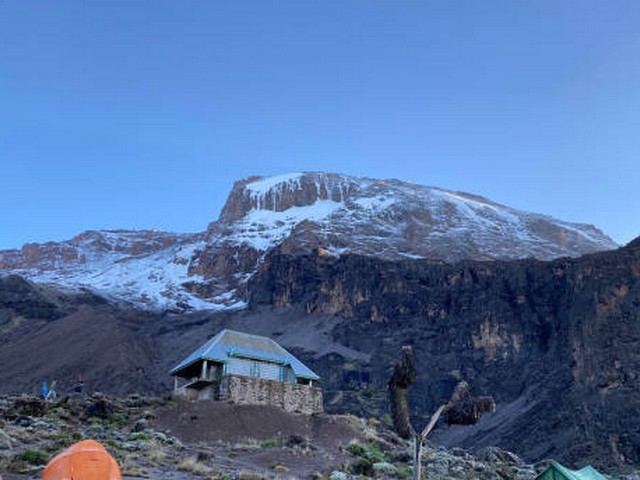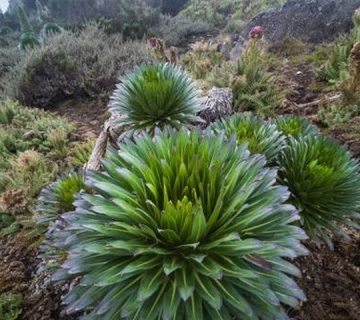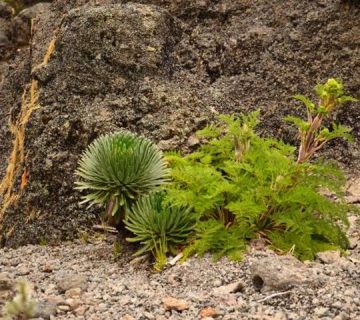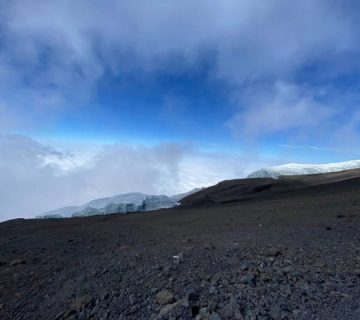How To Stay Fit During A Kilimanjaro Trek
Ascending the mighty Mount Kilimanjaro is a dream for many adventurers around the globe. Known as the "Roof of Africa," it stands tall at 5,895 meters (19,341 feet), making it a phenomenal and thrilling challenge. However, tackling Kilimanjaro is not just about mental preparation; your physical readiness plays a pivotal role in your success. At Kilimanjaro Centre for Trekking and Ecotourism (KCTE), we understand that staying fit during your trek is crucial. Hence, we’re here to guide you through maintaining peak fitness on this majestic mountain adventure.
Begin With Preparation: Training Before the Trek
Cardiovascular Fitness
Embarking on a journey to Kilimanjaro requires a heart strong enough to withstand varied altitudes. Start with cardiovascular exercises such as running, swimming, or cycling. Gradually increase your intensity to improve endurance, ensuring your heart and lungs are prepared for the less oxygen-rich air at higher elevations.
Strength Training
Kilimanjaro will test your strength. Focus on building the muscle groups used most during hiking: legs, core, and back. Exercises like squats, lunges, planks, and deadlifts will fortify your body, making the long trek days more manageable.
Flexibility and Balance
Incorporate yoga or Pilates into your routine. Not only do these practices enhance flexibility, but they also improve balance—crucial for navigating uneven terrains and reducing injury risks.
Gear Up Right: Choosing the Best Equipment
Footwear
Invest in good-quality, durable, and comfortable hiking boots. Break them in well before your trek to avoid blisters and discomfort.
Clothing
Layering is key. Prepare for fluctuating temperatures with moisture-wicking base layers, insulating mid-layers, and a waterproof outer layer. Don’t forget a warm hat and gloves!
Backpack
A comfortable, fitting backpack with sufficient space is essential. Ensure it has good support and is adjusted to your body to prevent strains during the hike.
On The Trail: Maintaining Fitness
Pace Yourself
Kilimanjaro is not a race. Ascend at a pace that allows you to acclimatize properly to the altitude. The popular Swahili phrase "pole pole" (slowly, slowly) is your best mantra here.
Hydration is Key
Dehydration at high altitudes can be dangerous. Drink plenty of water throughout your climb. Monitoring the color of your urine is a good way to keep check; aim for a light straw color.
Nourish Your Body
Your body will burn a significant number of calories. Eat nutrient-dense foods provided during the trek. Meals rich in carbohydrates, proteins, and fats will keep your energy levels up and aid in muscle recovery.
Rest and Recover
Adequate sleep is crucial. Although it might be difficult to get a perfect night’s sleep at altitude, try to rest whenever possible. Listen to your body—if you need short breaks during your trek, take them.
After Your Trek: Recovery
Rehydrate and Refuel
Once you descend, focus on rehydrating and replenishing your body with healthy foods. Include plenty of proteins to aid in muscle recovery.
Gentle Exercise
Engage in light activities like walking or stretching to keep muscles loose and aid in overall recovery.
Celebrate Your Achievement
Don’t forget to celebrate. Reaching the summit of Kilimanjaro is a monumental accomplishment. Reflect on your journey and be proud of your incredible achievement.
Why Trek with Kilimanjaro Centre For Trekking and Ecotourism (KCTE)?
At KCTE, we’re not just a trekking company; we’re your partners in adventure. We ensure you’re fully prepared with pre-trek fitness consultations, top-notch gear advice, and a supportive, experienced team of guides who are dedicated to making your Kilimanjaro experience unforgettable.
Booking your climb with us means choosing a partner who values safety, experience, and ecological mindfulness. Let KCTE be part of your journey to conquer the Roof of Africa.
FAQs
What fitness level is required to climb Kilimanjaro?
While you don’t need to be an elite athlete, a moderate level of fitness is necessary. Being able to handle 6-8 hours of hiking for consecutive days is a good benchmark.
When is the best time to climb Kilimanjaro?
The best times are during the dry seasons: January to March and June to October. These months offer the most favorable weather conditions for climbing.
How long does it take to prepare for a Kilimanjaro trek?
Preparing for Kilimanjaro should ideally start at least 6 months before your planned trek. This gives you ample time to build up your physical fitness and test your gear.
How do I deal with altitude sickness?
The key to avoiding altitude sickness is proper acclimatization. Following the “climb high, sleep low” principle and staying hydrated can significantly help.
Ready to Conquer Kilimanjaro?
Embarking on a Kilimanjaro trek is an exhilarating challenge that can be life-changing. Staying fit during the climb is crucial, but remember, preparation starts well before you set foot on the mountain. With Kilimanjaro Centre for Trekking and Ecotourism (KCTE) by your side, you’re set for a safe, memorable, and successful ascent.
Are you ready to stand atop Africa’s highest peak? Join us at KCTE, where your adventure dreams become reality. Visit our website or contact us today to book your journey to the Roof of Africa!




